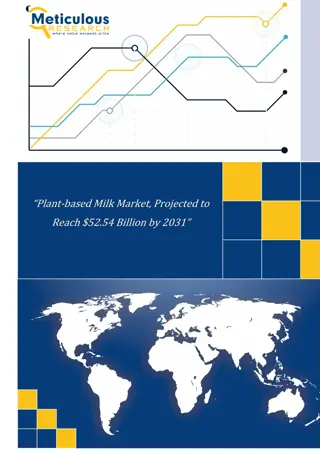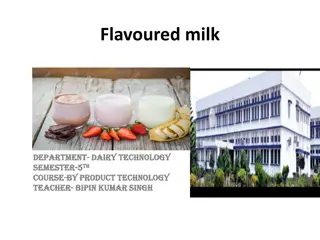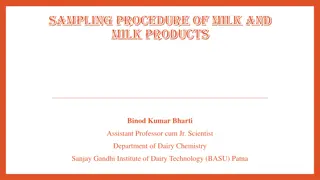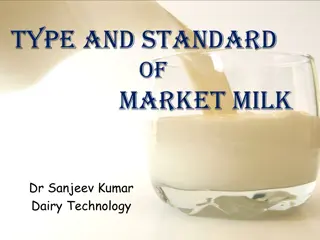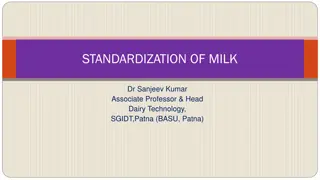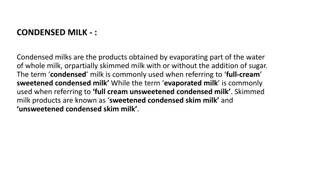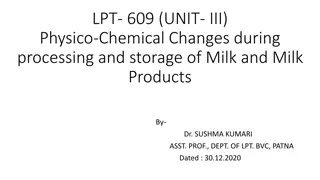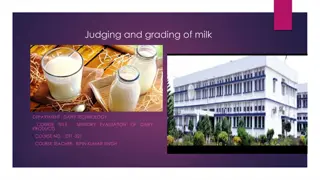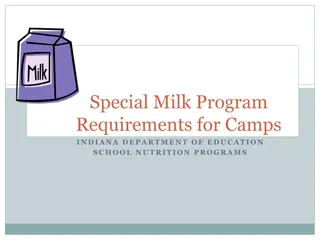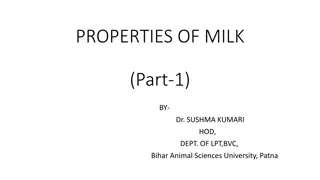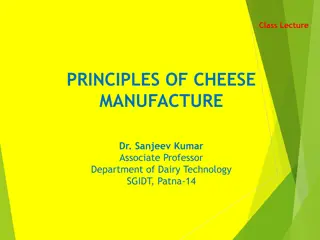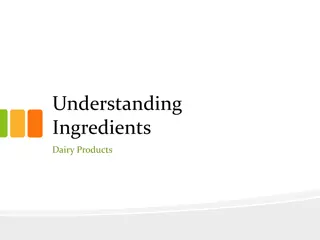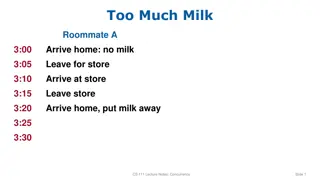Understanding the Composition of Milk by Dr. Sanjeev Kumar
Milk, a vital substance for mammalian offspring, is a complex fluid composed of water, fat, protein, lactose, minerals, vitamins, and enzymes. Dr. Sanjeev Kumar, an Associate Professor and Head of the Department of Dairy Technology at SGIDT, enlightens us on the various constituents of milk, market milk, and India's standing in global milk production. Discover the intricacies of milk composition and its significance in nature and human consumption.
Download Presentation

Please find below an Image/Link to download the presentation.
The content on the website is provided AS IS for your information and personal use only. It may not be sold, licensed, or shared on other websites without obtaining consent from the author. Download presentation by click this link. If you encounter any issues during the download, it is possible that the publisher has removed the file from their server.
E N D
Presentation Transcript
Class Lecture Composition of Milk & Dr. Sanjeev Kumar Associate Professor & Head Department of Dairy Technology SGIDT, Patna-14
Introduction Milk is the substance created by nature to feed the mammalian offspring. All species of mammals produce milk for this purpose. Definition: Defined as the whole, fresh, clean, lacteal secretion obtained by the complete milking of one or more healthy milch animals, excluding that obtained within 15 days before or 5 days after calving or such periods as may be necessary to render the milk practically colostrum-free, and containing the minimum prescribed %age of milk fat and SNF. Market milk: Refers to fluid whole milk that is sold to individuals usually for direct consumption. Excludes milk consumed on the farm and that used for manufacture of dairy products.
India ranks in the world : first in respect of cattle and buffalo, second in goat third in sheep population. India has about 13% of the global cattle population (www.fao.org). Of these, nearly, 13% are crossbred of the total cattle population. about 55% of the world buffalo population. India s position as the highest producer of milk Productivity per animal is only 987 kg/lactation as compared to the world average of 2038 kg/lactation (www.dahd.nic.in).
Milk Constituents: Milk a complex biological fluid consisting of seven main components: WATER, FAT, PROTEIN, SUGAR (LACTOSE), MINERALS, VITAMINS and ENZYMES. It is a white opaque fluid in which fat is present as an emulsion, protein and some mineral matters in colloidal suspension lactose together with some minerals and soluble proteins in true solution.
The opacity of milk is due to its content of suspended particles of fat, proteins and certain minerals. The colour varies from white to yellow depending on the carotene content of the fat. Milk has a pleasant, slightly sweet taste, and pleasant odour. It is an excellent source of calcium, phosphates and riboflavin.
Milk Constituents: Major Constituent Water True Constituent Milk fat Fat Protein Casein Lactose Lactose Ash(minerals) Minor Constituent Phospholipidis Sterols Vitamins Enzymes Pigments
Composition of Milk Average composition of milk of different mammals (%)
Factors affecting chemical composition of milk: Species Individuality of the animal Breed variation Seasonal changes Weather Age and health of the animal Managerial practices (nature and quality of feed, interval of milking, frequency of milking etc) Stage of lactation Quarter of the udder of the animal from which milk is drawn, etc.
THANKS 11





